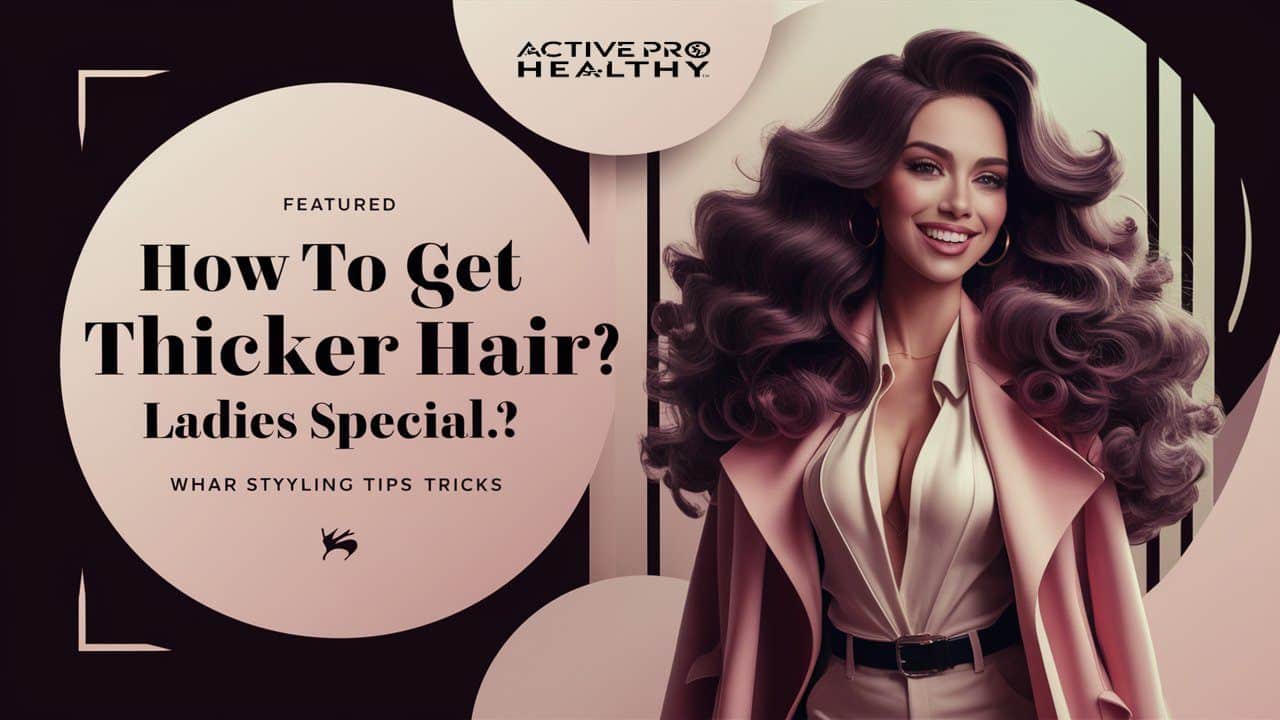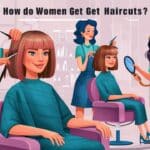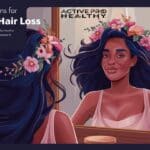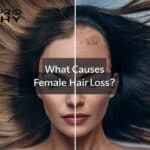Would you like to have a beautiful head of hair that everyone wants to touch? Are you ready to say goodbye on dealing with thin, dry hair? Then you’re lucky because we are going to teach you some methods to change the look of your thinning hair into a lush and healthy hair. Get ready to shock all those who see you! Find out from professionals about 10 proven methods to make your hair look fuller.
Understanding Thinning Hair in Women
It is important to comprehend the primary factors behind the decrease in growth of female’s hair before we begin to deliberate on remedies.
Usually, this is rooted in the genetic constitution of an individual partly, though there are additional causes that induce excessive hair fall like hormonal imbalances during pregnancy and menopause.
With so much stress these days it should come as no surprise that there would be cases where stress also becomes responsible for stunted growth. It causes an interruption in hair follicles’ natural cycle .
Many folks have assumed that baldness affects only men but this is not true at all.
Nevertheless, the problem can become more serious when the shortage of essential substances (above all iron, zinc and protein), use of strong chemicals and excessive attention to styling come into play.
“Hair is a gorgeously renewable resource, and the more you nurture it, the better it looks.” – John Barrett, Celebrity Hairstylist
Genetic Factors
Female pattern alopecia, also known as androgenetic alopecia, is the most common hair fall problem among women.
It is a genetic condition characterized by the shrinking of hair follicles as time goes by, thus leading to shorter and thinner hair strands. Even though the loss is diffuse, it typically appears as:
- A widening part line
- Overall thinning at the crown
In some cases, the hairline can also recede at the temples.
Hormonal Changes
Hormonal imbalances and fluctuations are a major culprit behind temporary thinning in women. Common triggers include:
- Pregnancy: Estrogen levels drop drastically post-pregnancy, causing excessive shedding.
- Menopause: Declining estrogen and progesterone impact the hair growth cycle.
- PCOS: Women with polycystic ovarian syndrome experience disruptions in their hair cycles due to elevated levels of androgens.
- Thyroid disorders: The thinning of the hair on the scalp can result from an abnormal production of hormones by thyroid glands that are either too active or not active enough.
Case Study: “I used to have lush hair pre-pregnancy. When I started to give birth, it felt as if leaves fell off each hair strand every time I brushed or took a shower. Until my physician advised me that this was only a temporary symptom of the abnormal hair drop due to hormonal shifts so there’s nothing to worry about.” – Sarah, 29
Learn more about What Helps Women’s Hair Loss?
Lifestyle Factors
While genetics and hormones initiate thinning, certain lifestyle factors can accelerate or worsen the condition:
- Stress: Intense distress stimulates a “shock to the system”, which triggers more hair follicles to go into the shedding phase.
- Nutrient deficiencies: Hair growth is stunted by lack of protein, iron, zinc, biotin and vitamin D.
- Yo-yo dieting: Extreme changes in weight lead to temporary hair loss.
- Over-styling: Over time, excessive heat, chemical and tension cause hair quality to deteriorate.
The good news is that once you identify and address these triggers, saw palmetto hair regrowth is possible with the right care and nourishment.
The Inside Job – Nourishing from Within
Great hair begins from within because as the saying goes. Strong, thick hair cannot come without a healthy diet that abounds in complex carbohydrates and proteins together with fats that are good for you alongside other nutrients.
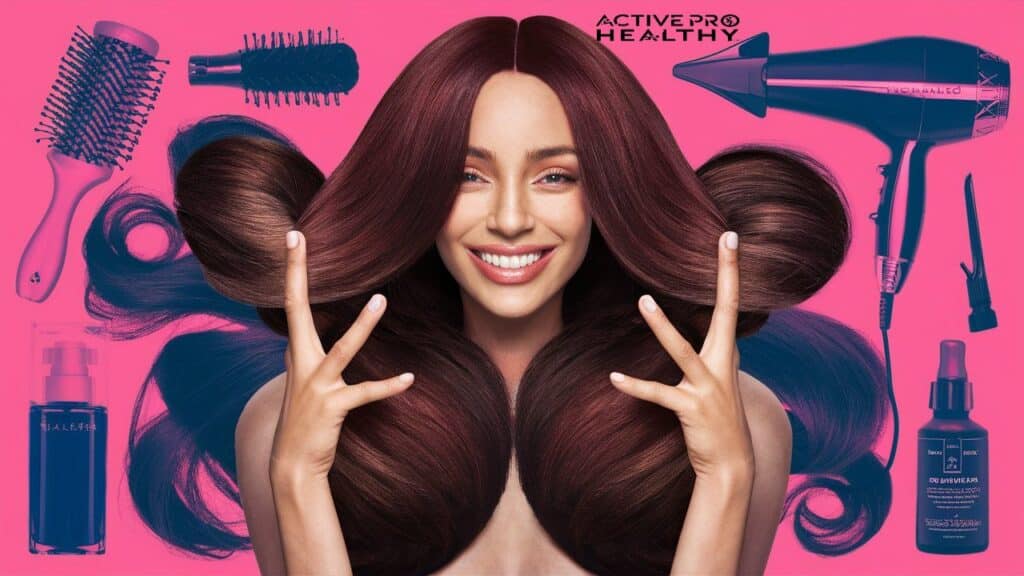
Here are some key nutrients that should be on your radar:
- Protein (found in eggs, meat, legumes) is the building block of hair.
- Iron (red meat, spinach, lentils) is essential for healthy hair growth.
- Zinc (oysters, cashews, chicken) aids in protein and keratin production.
- Biotin (egg yolks, avocados, salmon) is a B vitamin that promotes hair thickness.
- Vitamin C (citrus fruits, bell peppers) boosts iron absorption.
In addition to a nutrient-packed diet, staying hydrated by drinking enough water is vital, as dehydration can lead to dry, brittle strands. Supplements like biotin, zinc, iron, and folic acid can provide an extra boost when dietary intake is insufficient.
The Power of Protein
Hair is primarily made up of a protein called keratin. Therefore, meeting your body’s protein needs through diet is non-negotiable for thick, healthy hair.
Good protein sources include:
- Eggs
- Meat (chicken, turkey, lean beef)
- Fish and seafood
- Legumes (lentils, beans, chickpeas)
- Quinoa
- Greek yogurt
Aim to have at least 47g protein daily for 130 lb (59 kg) like female example the person 0.8g protein/kg body weight per day should be targeted.
Protein Deficiency Warning Signs: Excessive shedding, brittle strands that snap easily, patchy hair loss.
Iron for Thick Hair
One of the most typical nutritional causes for hair thinning and loss in females is lack of iron. It makes possible for hair follicles to receive necessary nutrients.
When your hair does not receive enough nutrients it loses its strength and starts falling out faster. The other symptoms are tiredness, pallid hue of face and shortness of breath.
Iron-rich foods:
- Red meat
- Spinach and other leafy greens
- Lentils, soybeans
- Fortified cereals
- Dates, prunes
Fruits like oranges, tomatoes or bell peppers which have plenty of vitamin C, help our bodies absorb iron better. Since the bioavailability of plant- based ingredients is low, vegetarians need to consider taking extra supplements.
The Zinc Connection
Zinc plays a key role in several aspects of hair growth:
- Involved in protein synthesis and keratin formation
- Helps regulate hormones like testosterone that impact hair cycles
- Possesses anti-inflammatory properties that may counter hair loss
Excellent zinc sources:
- Oysters
- Red meat
- Chicken
- Cashews, almonds
- Legumes
- Oats
Telltale signs of a zinc deficiency include a dry, flaky scalp, slow hair growth, and thinning. Most multivitamin supplements contain zinc.
Biotin: The Hair Growth Superhero
Biotin (vitamin B7) is a rock star when it comes to lush locks. It strengthens keratin infrastructure and increases hair’s resistance to shedding and breakage.
Food sources like egg yolks, salmon, avocados and nuts are great. But many women notice a remarkable difference after taking an over-the-counter biotin supplement.
Optimal Biotin Dose: Around 2-5mg daily, taken with a meal for better absorption.
Biotin Pro Tip: Be patient – it can take 2-3 months of consistent biotin intake to see thicker, fuller hair results.
The bottom line is that nourishing from within is the foundation for gorgeous, healthy hair. Follow a balanced diet, stay hydrated, and supplement as needed to cover nutritional gaps.
An External Overhaul
While nourishing your body from within is step one, revamping your haircare routine is equally crucial. Here’s what you need to do:
Gentle Haircare Routine
- Switch to a gentle, sulfate-free shampoo and conditioner formulated for fine, thin hair.
- Limit washing to 2-3 times a week to retain natural oils.
- Use a hydrating, lightweight hair mask once a week.
Avoid Damaging Habits
- Minimize heat styling with blow dryers, flat irons and curling wands.
- Steer clear of harsh chemical treatments like bleaching and perming.
- Don’t over-brush or massage scalp aggressively.
Stimulate Scalp Health
- Perform weekly scalp massages with fingertips to improve blood circulation.
- Try inversion methods (bending over to increase blood flow to scalp).
- Opt for protective hairstyles like loose braids or buns.
Deep Conditioning Treatment: “I was struggling with dry, damaged ends and my hair felt like straw. After using a keratin-infused deep conditioning mask once a week, I saw a dramatic improvement in softness and manageability within a month!” – Jessica, 32
The Magical World of Hair Thickening Products
While good hair practices lay the groundwork, sometimes you need an extra boost from topical hair-thickening products. Here’s your cheat sheet:

Volumizing Shampoos & Conditioners
Look for formulas with:
- Proteins like keratin to coat and plump strands.
- Panthenol (vitamin B5) to thicken existing hair.
- Caffeine to stimulate dormant follicles.
Hair Fibers & Powders
These colored keratin or plant-based fibers and powders:
- Cling to existing strands for instant volume and fullness
- Work great for camouflaging thinning areas and adding density
Mousses, Sprays & Lotions
Styling products with thickening polymers:
- Add grit and texture to hair
- Create the illusion of fuller-looking strands
Salon Treatments
- Keratin treatments: Infuse protein into hair for improved thickness
- PRP (platelet-rich plasma): Uses your own plasma to stimulate growth
“I have tried so many volumizing sprays and lotions, but Pro Hair Thicker is by far the best. My fine, limp hair gets an instant oomph that lasts all day long!”
Fab Hair Styling Hacks
You’d be amazed at how cleverly styling your hair can create the illusion of serious volume and density! Let’s go through some hairstyling tips:
Blowdry Techniques
- Flip hair upside down and blowdry towards the roots using a round brush
- Use a root lifting spray at the crown for extra oomph
- Rough dry hair using just your fingers for tousled volume
Curl & Wave It Up
Curls and waves have a natural fullness that straight hair lacks.
- Use a large barrel curling iron or wand for bouncy volume
- Braid damp hair and let it dry for beachy waves
- Try a curling rod set for tight, springy ringlets
Master Backcombing & Teasing
An age-old volume trick straight from the 60s!
- Section out the crown area
- Use a fine-toothed comb to gently tease and backcomb
- Finish with a light hairspray to set the volume
Go for Voluminous Hairstyles
- Deep side parts visually increase density
- Topknots, high ponies accentuate lift at the crown
- Asymmetrical bobs create an optical illusion of thickness
When to Seek Professional Help
If your attempts to thicken hair prove futile, it may signify an underlying medical trigger that needs professional evaluation, such as:
- Thyroid issues
- Hormonal imbalances (PCOS, menopause etc.)
- Excessive physical/emotional stress
- Nutritional deficiencies
- Autoimmune disorders
In such cases, treatments like medications, laser therapy, or platelet-rich plasma (PRP) injections prescribed by a dermatologist or trichologist could be beneficial.
For those with severe hair loss or thinning, wigs and extensions are a great way to instantly achieve a full, thick look while undergoing medical treatment. Many modern options look incredibly realistic and natural.
“A bad hair day used to be my biggest crisis. Thanks to pro extensions, I don’t have those anymore!” – Kate, 48
Conclusion
You don’t have to be a slave to thin, flat hair anymore! From nourishing your body with the right nutrients to revamping your haircare routine and trying volumizing products – you now have an arsenal of expert-approved tips.
Remember, consistency is key when it comes to thicker, fuller hair. So stick with a solid regimen incorporating these diet, product and styling tricks, and you’ll be well on your way to rediscovering your inner bombshell. Let your thick, luscious mane be your crown, gorgeous!

Tina Hudson is a renowned hair expert and author whose passion lies in helping people achieve healthy, luscious locks. With years of experience in the beauty industry, she has gained a deep understanding of the science behind hair growth and haircare. Her books and guides offer practical, research-backed solutions for various hair concerns, from thinning and hair loss to frizz and dullness. Through her engaging writing style and easy-to-follow tips, Tina empowers readers to unlock their hair’s true potential. Her dedication to promoting natural, sustainable haircare methods has earned her a loyal following among those seeking transformative results.
